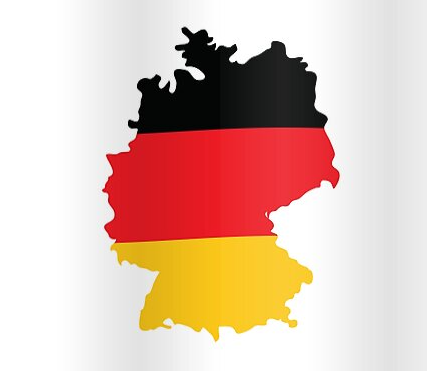Belarus, a country located in Eastern Europe, holds a rich cultural heritage with a distinct identity expressed through the Belarus National Color: white, red, and green. These color hold historical significance and have become a symbol of pride and unity for the Belarusian people. In this article, we will explore the origins, symbolism, and cultural importance of the national color, shedding light on their profound influence on Belarusian culture and traditions.
Belarusian national color, white, red, and green, are deeply ingrained in the country’s history and culture. They serve as a visual representation of the Belarusian people’s identity and aspirations. Understanding the origins and symbolism of these color is crucial to comprehending their significance in the Belarusian context.
Historical Significance of Belarus National Color
Origins of National Color
The national color of Belarus can be traced back to the early 20th century when the country was striving for independence. During this period, many Belarusian organizations adopted the white-red-white flag as a symbol of their national identity. Over time, this flag became associated with the struggle for independence and the preservation of Belarusian culture.
Symbolism and Meaning
Each color in the Belarusian national flag carries its own symbolism. White represents purity, innocence, and the desire for freedom. Red symbolizes courage, valor, and the sacrifices made by the Belarusian people throughout history. Green signifies hope, renewal, and the country’s abundant nature.
White Color
Cultural and Historical Significance
White has deep cultural and historical significance in Belarus. It is associated with the pristine landscapes, the purity of the Belarusian spirit, and the aspiration for a just and free society. The color white has been an integral part of Belarusian traditional attire, folklore, and religious ceremonies.
Symbolism in Belarusian Culture
In Belarusian culture, white represents peace, tranquility, and harmony. It symbolizes the unity of the Belarusian people and their aspirations for a better future. White is often associated with weddings, symbolizing the beginning of a new chapter in life and the hope for a prosperous future.
Red Color
Historical Context
The color red has played a significant role in Belarusian history. It represents the courage and resilience of the Belarusian people in the face of adversity. The red color is associated with the bloodshed and sacrifices made during the struggle for independence and the defense of the homeland.
Symbolism in Belarusian Culture
In Belarusian culture, red symbolizes strength, determination, and the indomitable spirit of the Belarusian people. It is often associated with important national celebrations, such as Independence Day, where red flags and banners adorn the streets, symbolizing the unity and resilience of the nation.
Green Color
Cultural and Historical Significance
Green holds cultural and historical significance in Belarus, representing the country’s lush landscapes, fertile lands, and rich natural resources. Belarus is known as the “Lungs of Europe” due to its expansive forests and pristine nature. Green is a reflection of the deep connection between the Belarusian people and their environment.
Symbolism in Belarusian Culture
In Belarusian culture, green symbolizes growth, prosperity, and harmony with nature. It represents the deep-rooted agricultural traditions and the importance of preserving the natural heritage of the country. Green is often associated with springtime, symbolizing renewal, hope, and the promise of a bountiful harvest.
Combination of Belarus National Color
National Flag and Emblem
The combination of white, red, and green color in the national flag of Belarus holds great significance. The white-red-white flag, with the vertical stripe of red symbolically separating the white, represents the unity of the Belarusian people and their pursuit of independence and freedom. The national emblem, featuring a golden outline of the country with green ornamentation, encapsulates the connection between the people and the land.
Representation in National Events
The national color play a prominent role in various national events and celebrations. From official ceremonies to cultural festivals, the presence of the white, red, and green color is evident. These color adorn banners, decorations, and traditional attire, serving as a visual representation of national pride and identity.
Importance of Belarus National Color
Unity and Identity
The national color of Belarus hold immense importance in fostering unity and a sense of shared identity among the Belarusian people. They serve as a unifying symbol, transcending regional, social, and cultural differences, and reinforcing the collective spirit of the nation. The color create a sense of belonging and pride, strengthening the bonds between individuals and their homeland.
Representation in Sports and International Events
Belarus proudly displays its national color in international sports competitions, such as the Olympic Games and the World Championships. Athletes donning white, red, and green uniforms carry the spirit of their nation, inspiring fellow countrymen and leaving an indelible mark on the global stage. The national color become a visual representation of Belarusian athletes’ determination, skill, and national pride.
Frequently Asked Questions (FAQs)
- Why were these specific color chosen for Belarus?
The choice of white, red, and green as the national color of Belarus has historical significance. These color were adopted during the struggle for independence and represent the values, aspirations, and cultural heritage of the Belarusian people.
- Are there any alternative interpretations of the national color?
While the official interpretation of the national color is widely accepted, individuals may perceive and interpret them differently based on their personal experiences and cultural backgrounds. It’s important to acknowledge that symbols can hold multiple meanings.
- How do the national color influence Belarusian culture and traditions?
The national color of Belarus have a profound influence on the country’s culture and traditions. They are incorporated into various aspects of life, including art, folklore, celebrations, and attire, reinforcing the sense of national identity and pride.
- Has there been any controversy regarding the national color in Belarus?
The national color of Belarus have not been without controversy. Throughout history, political and social changes have influenced the perception and use of these color. Different groups may have differing interpretations or associations with the national color, leading to debates and discussions within the society.
Conclusion
The national color of white, red, and green hold deep cultural, historical, and symbolic significance for the Belarusian people. They represent unity, courage, hope, and the connection between the people and their homeland. These color are woven into the fabric of Belarusian culture, appearing in national events, celebrations, and sporting competitions, where they evoke a sense of national pride and identity. The white, red, and green color serve as a visual representation of the enduring spirit and aspirations of the Belarusian nation.
References
- “Symbolism of the National Flag of the Republic of Belarus” – Official website of the Embassy of the Republic of Belarus. Available at: https://www.belarus.by/en/about-belarus/state-symbols/flag
- “Belarusian Identity: Symbols and National Color” – Belarus Digest. Available at: https://belarusdigest.com/story/belarusian-identity-symbols-and-national-color/
- “Belarus: Color and Symbols” – BelarusFeed. Available at: https://belarusfeed.com/belarus-color-symbols/

